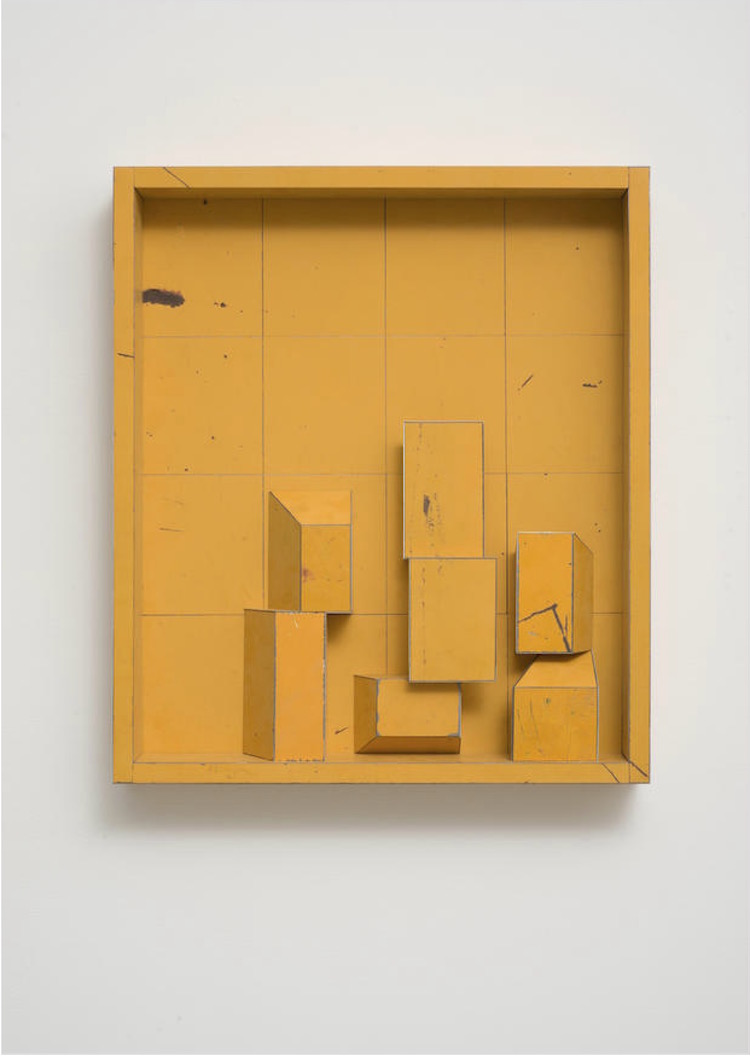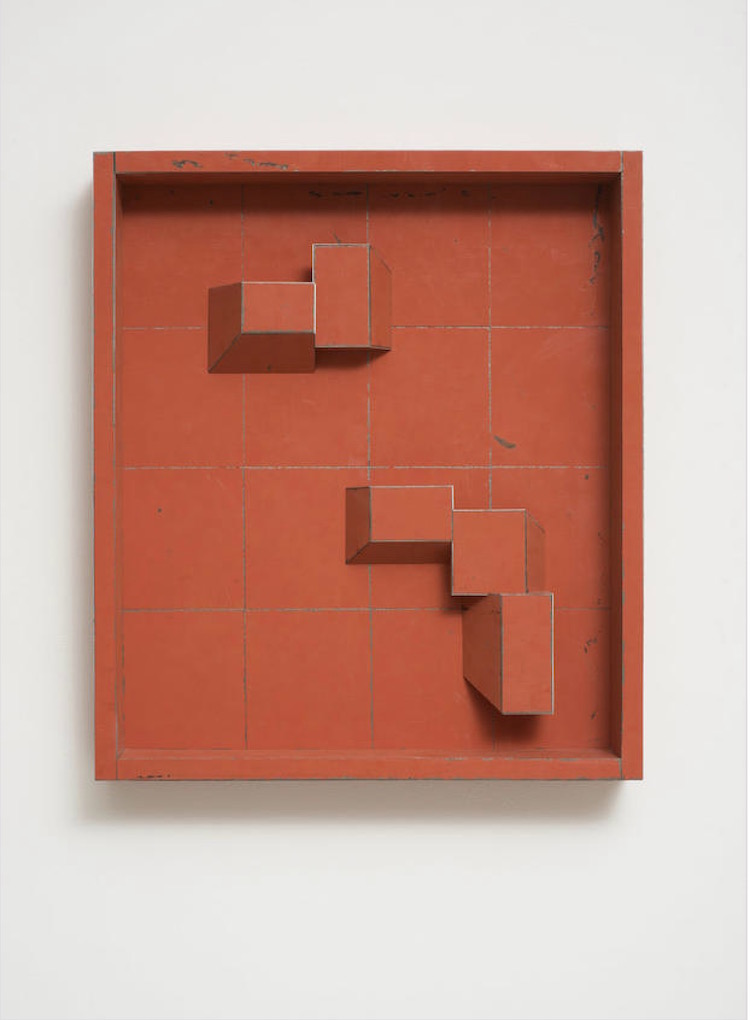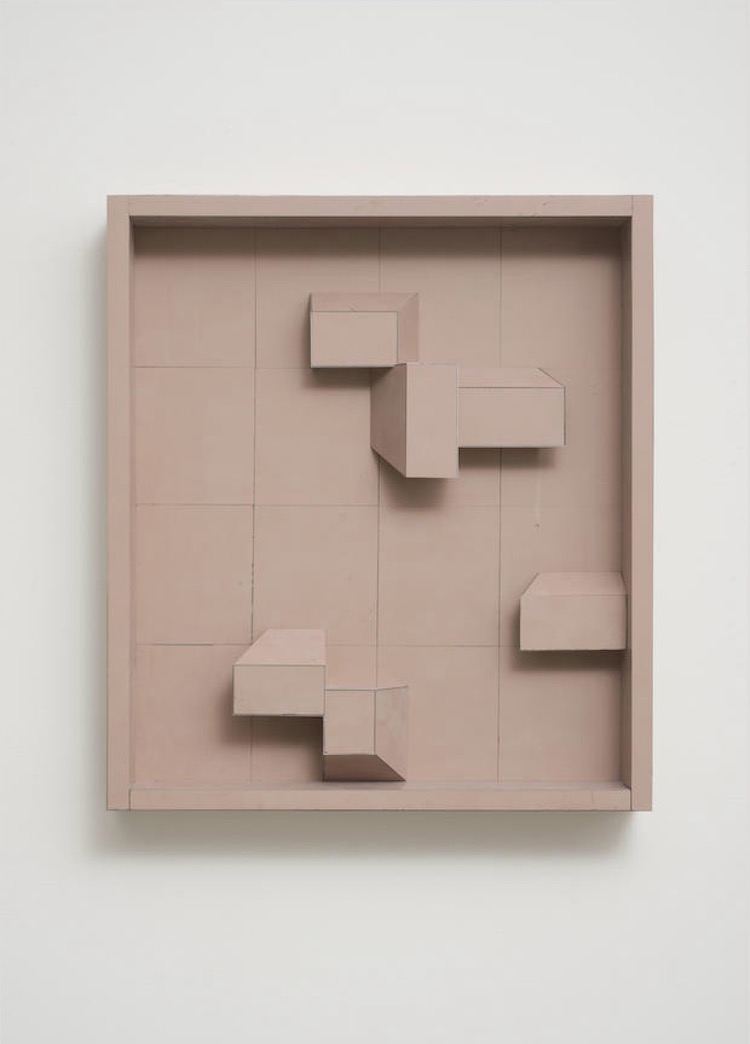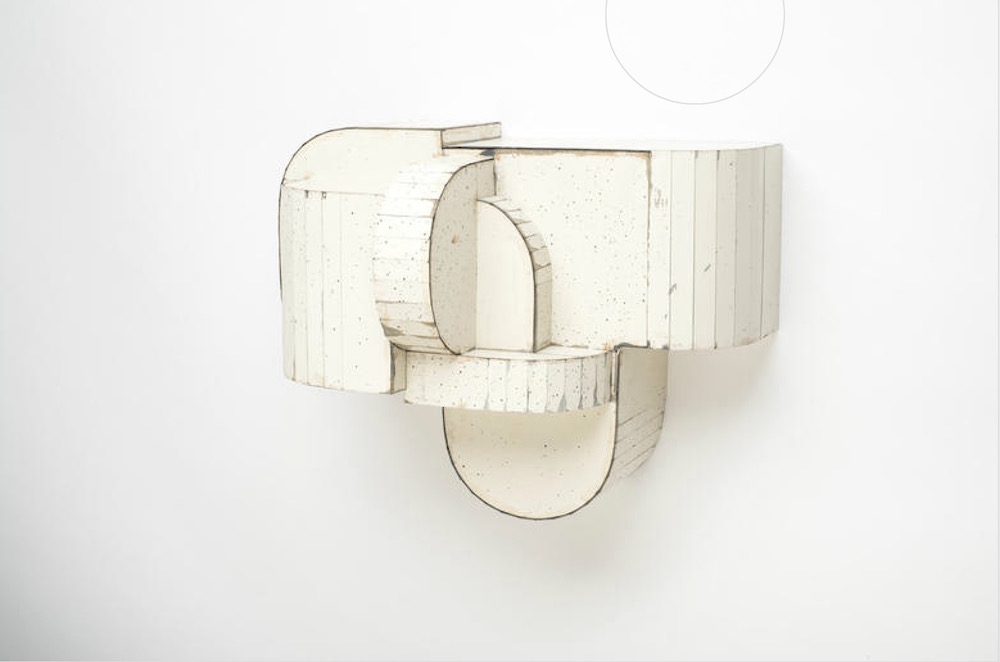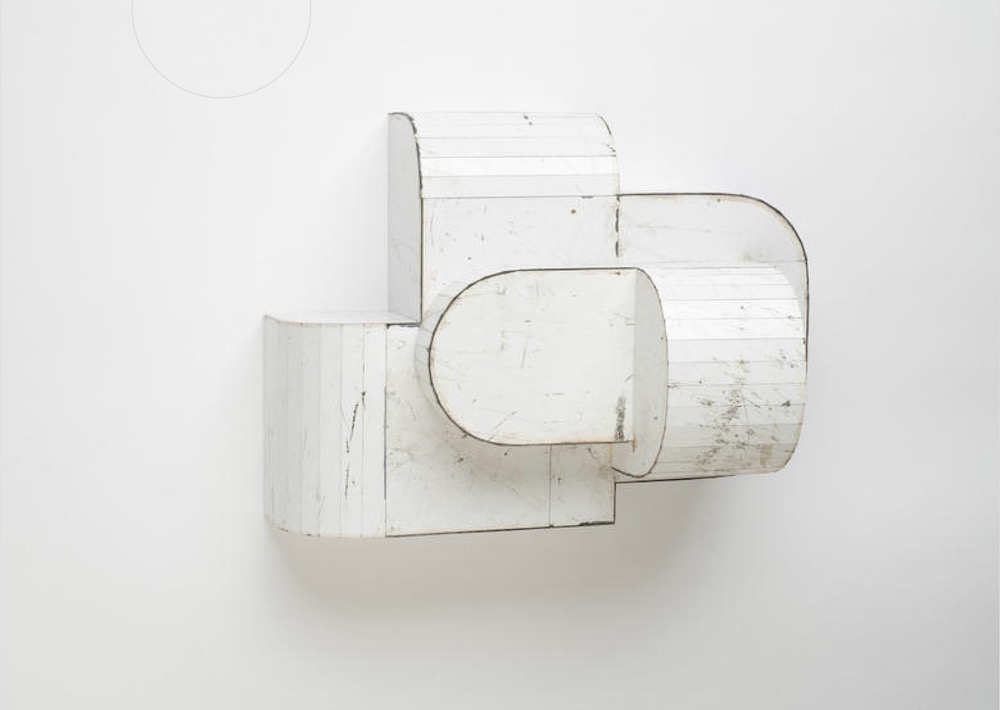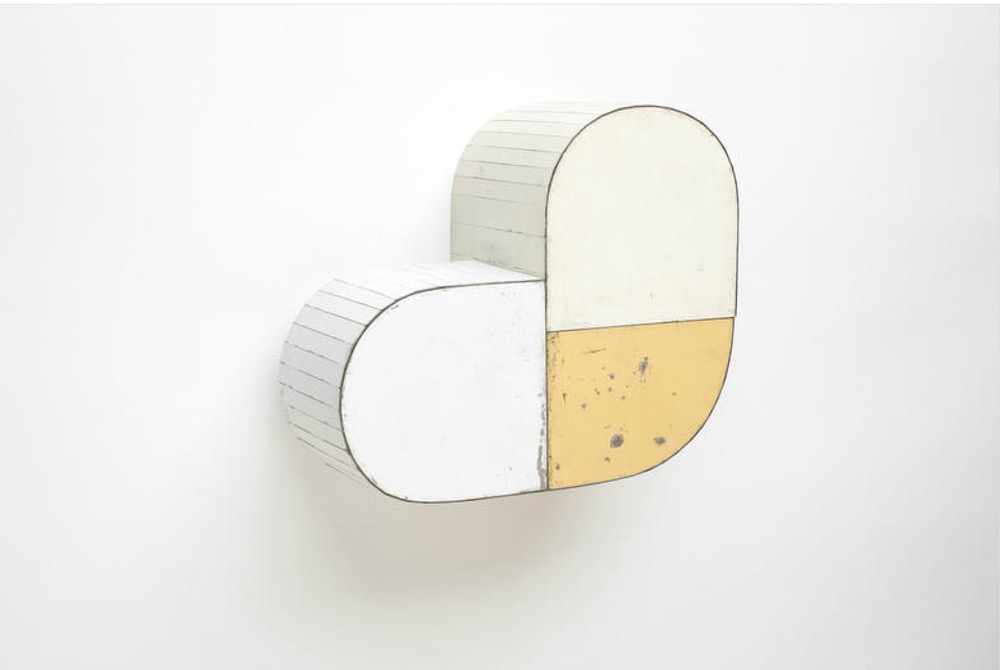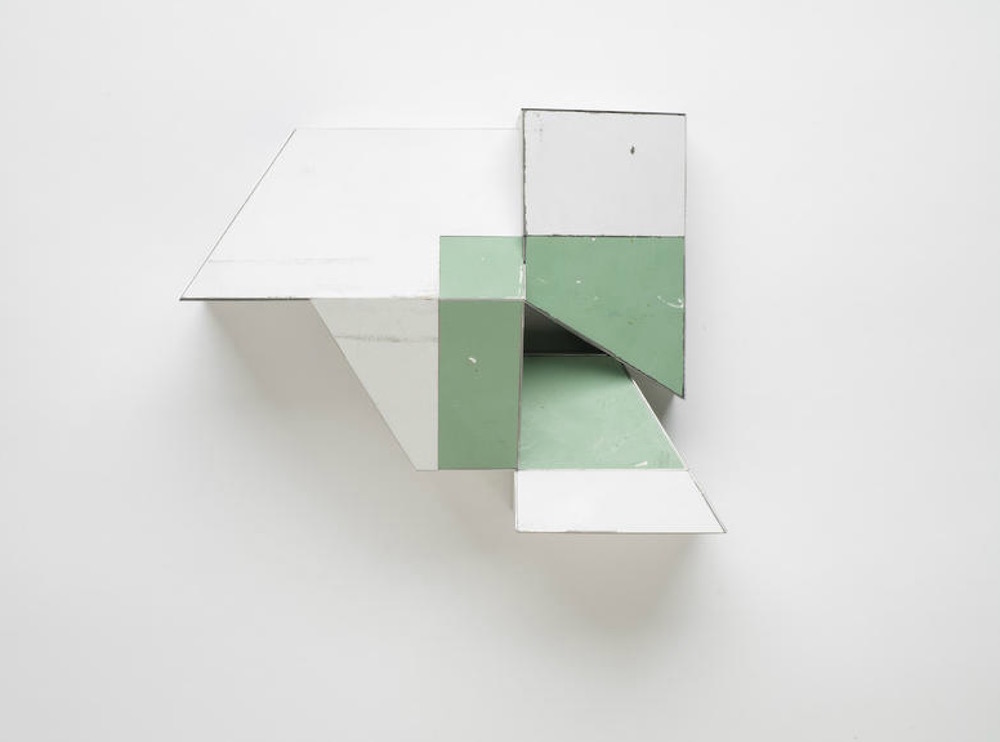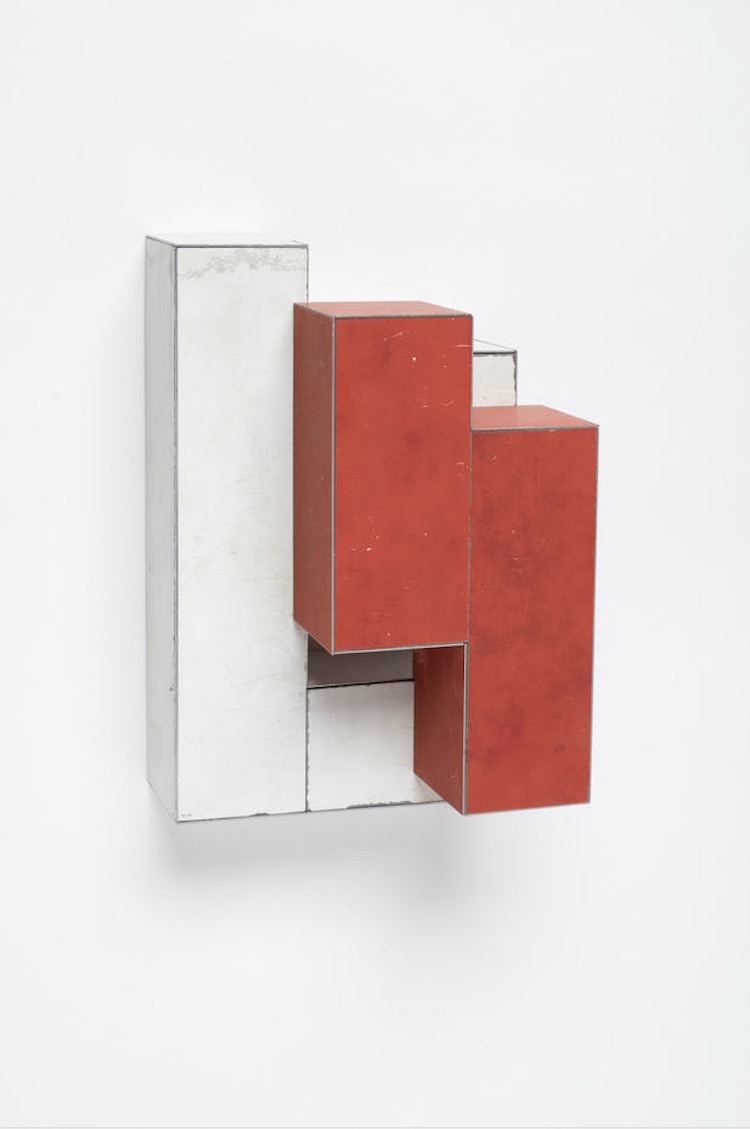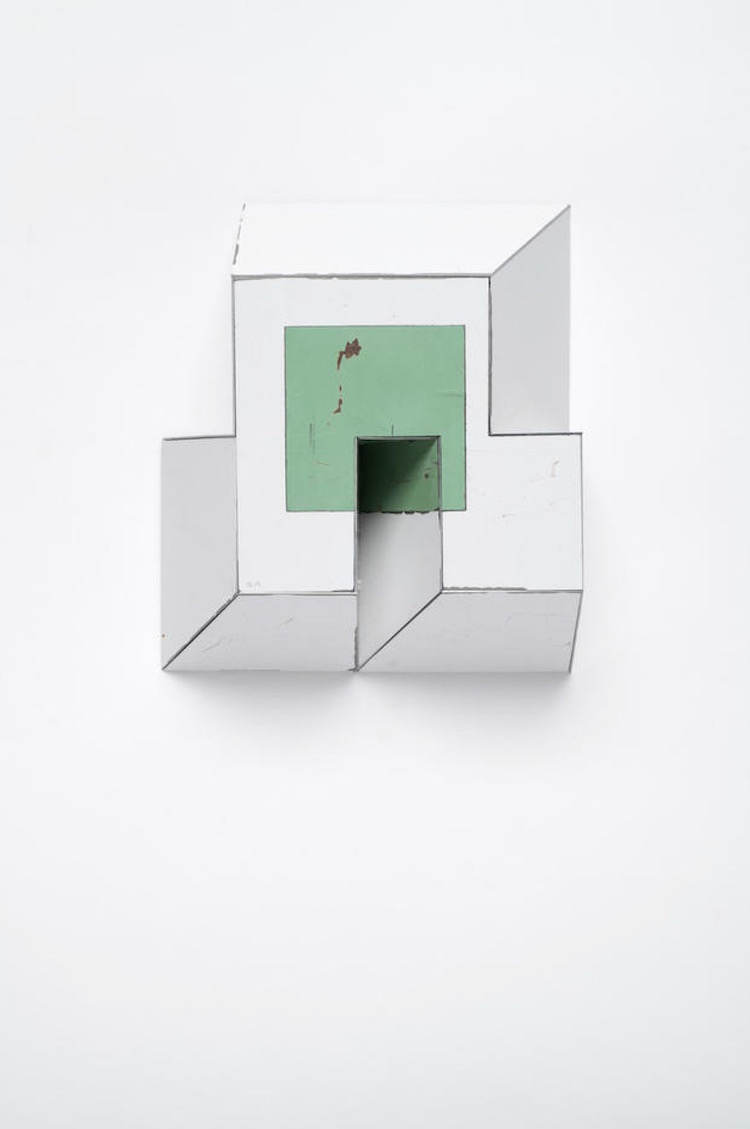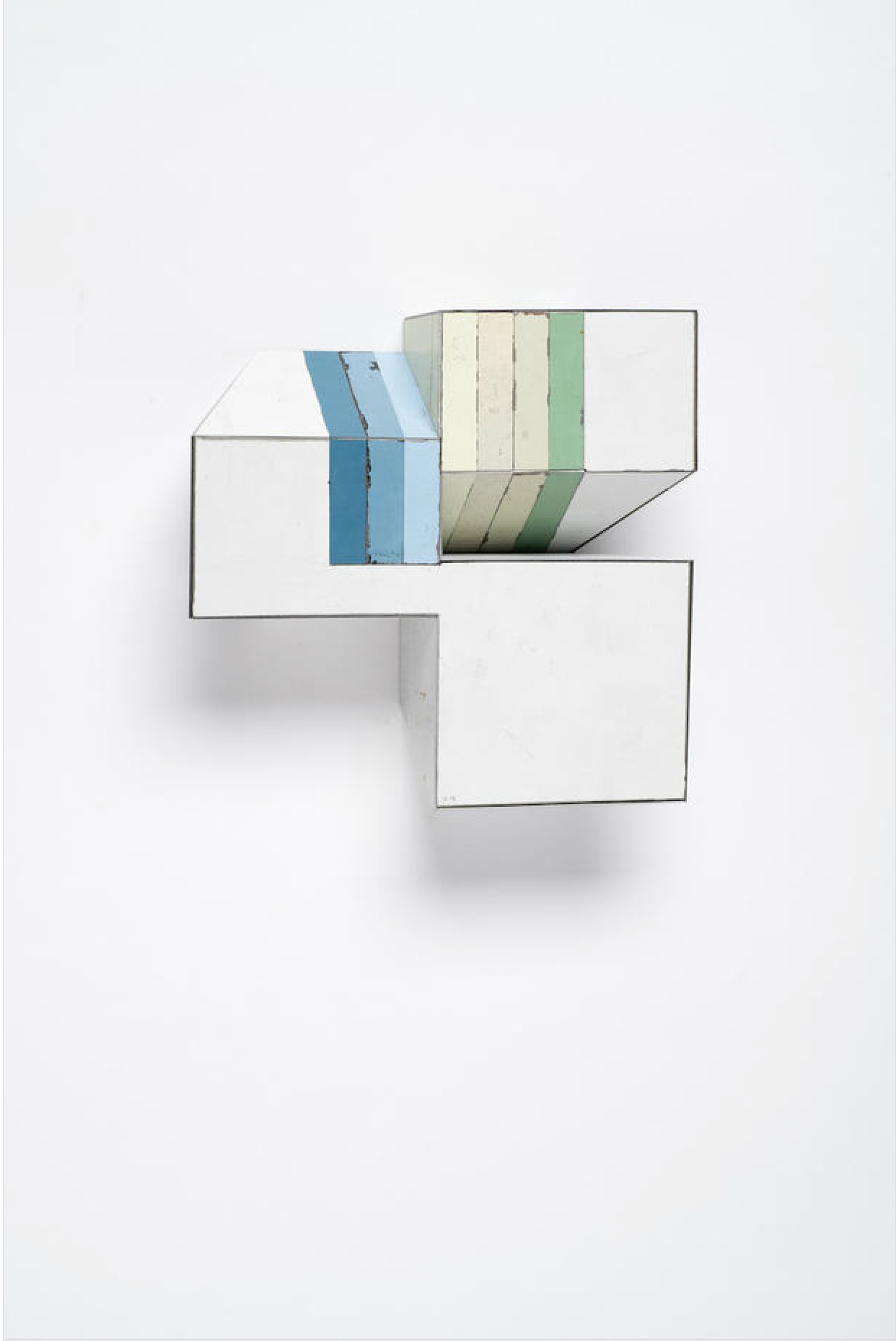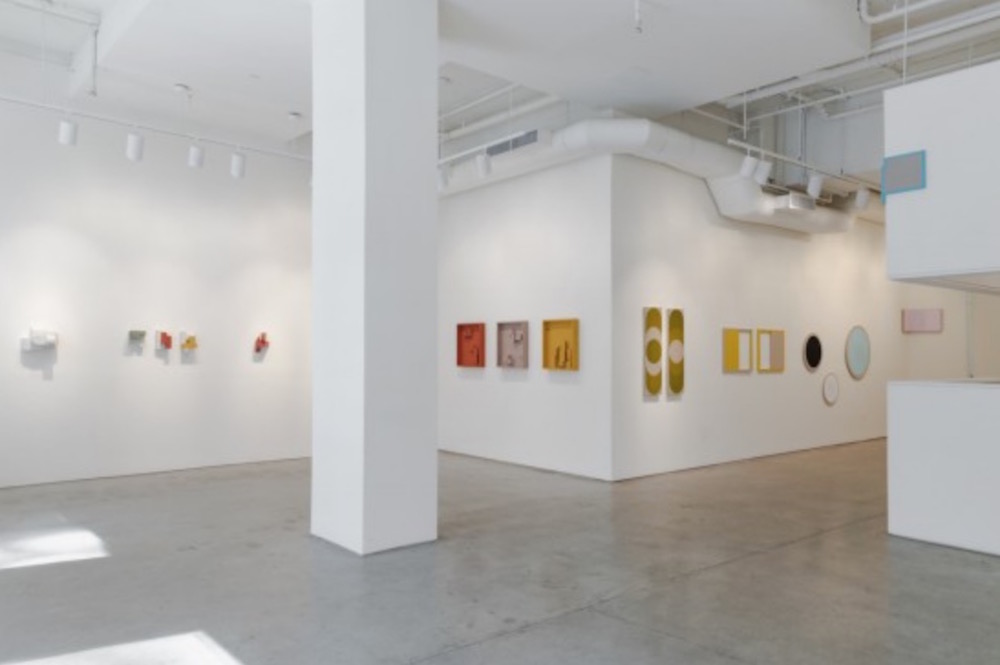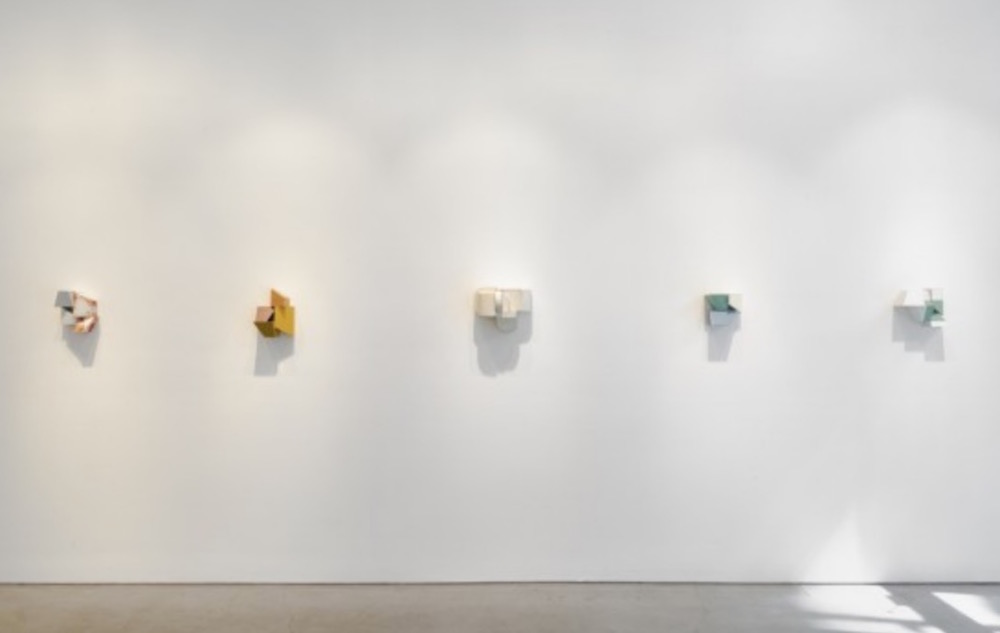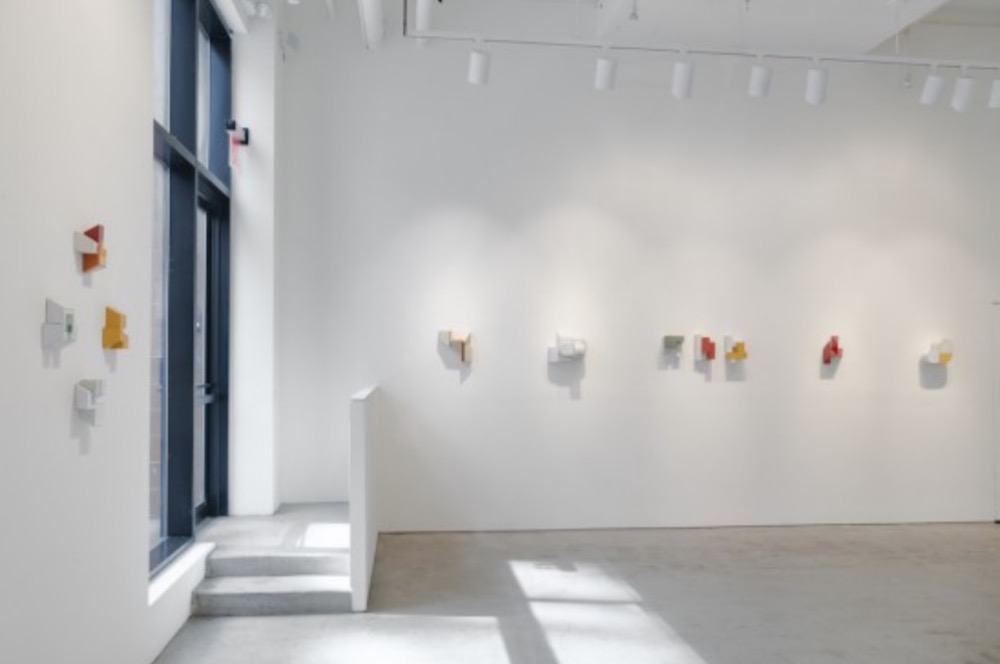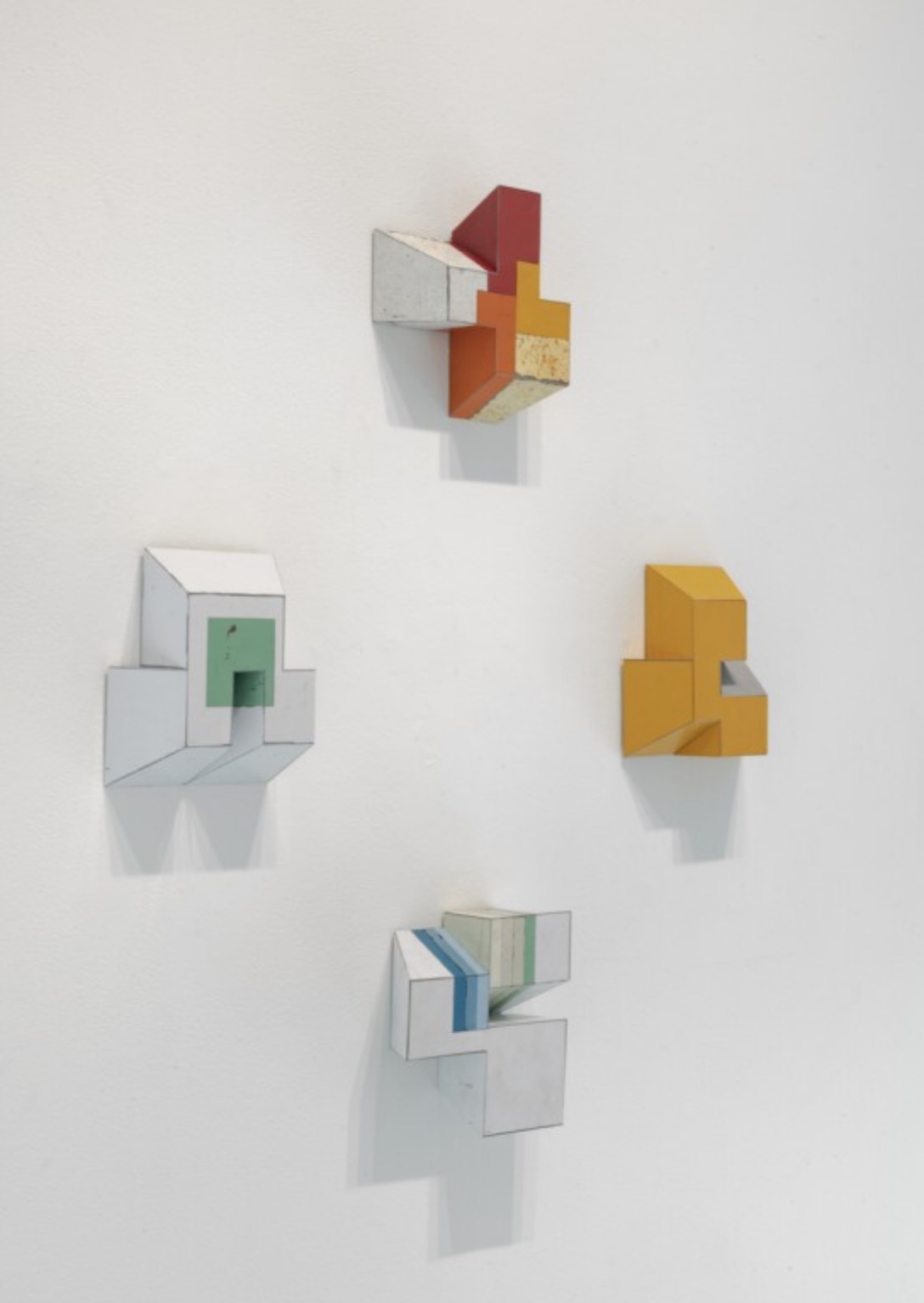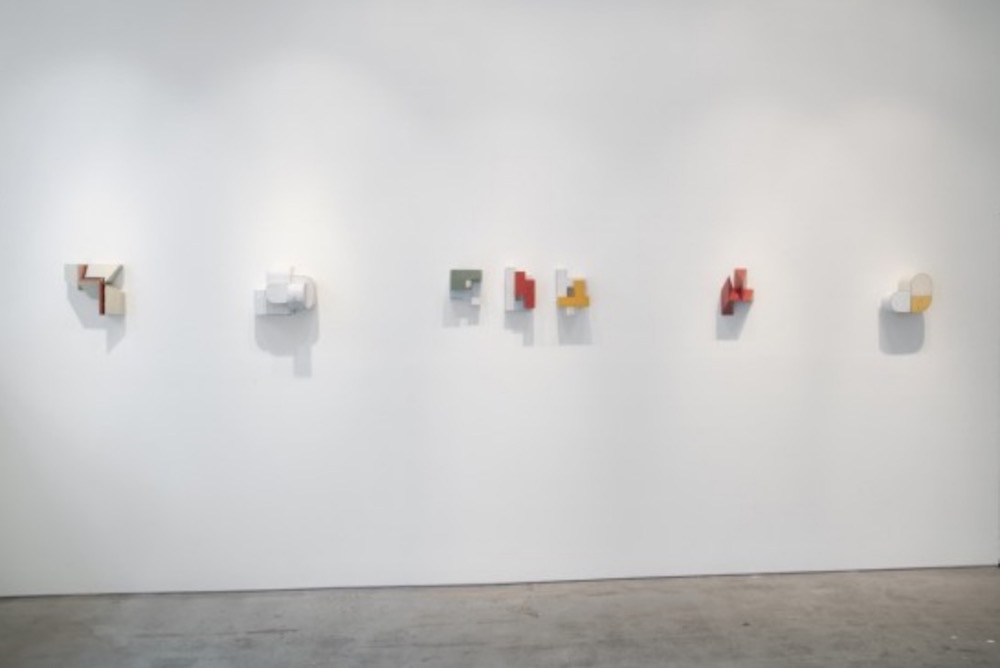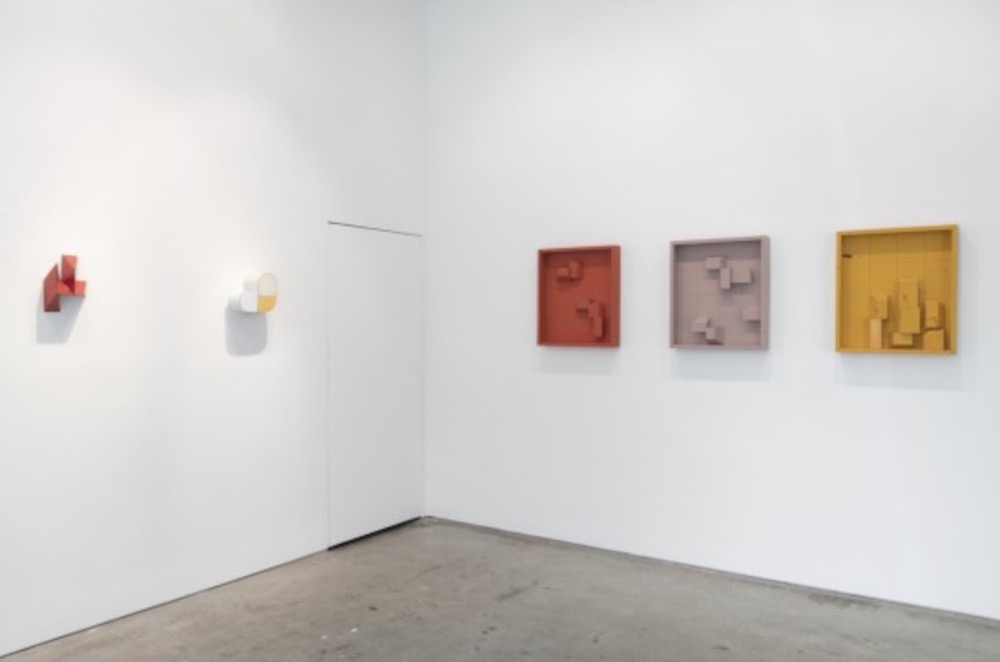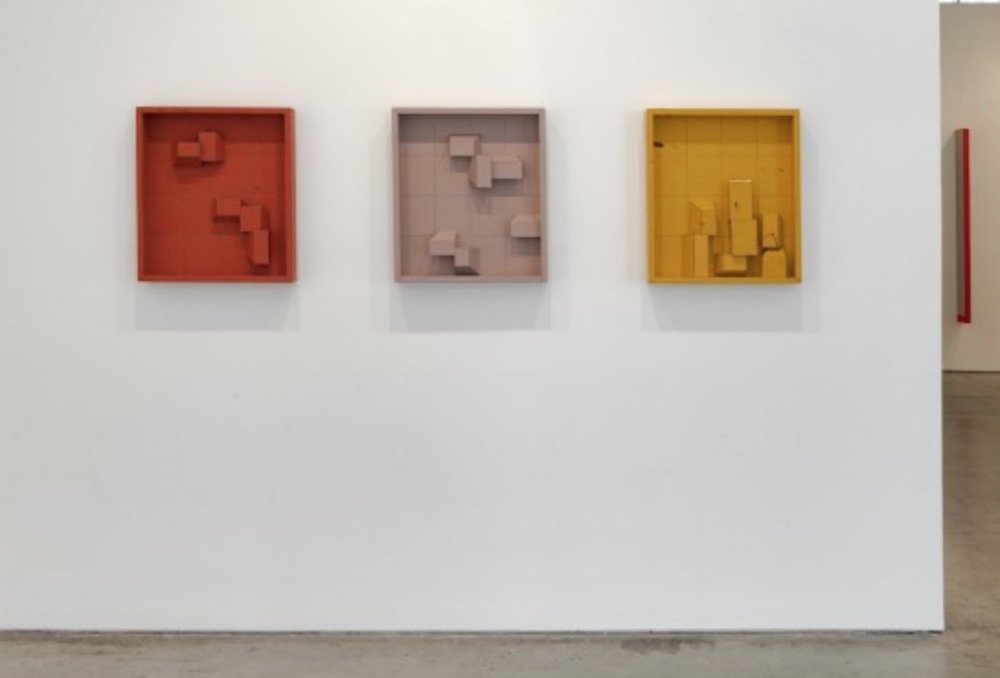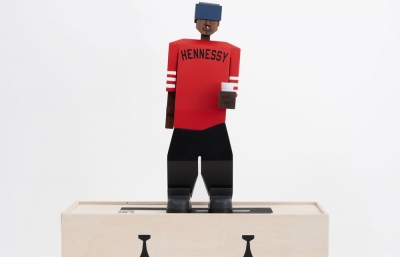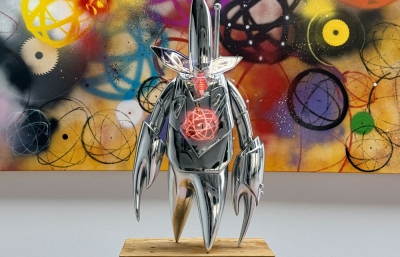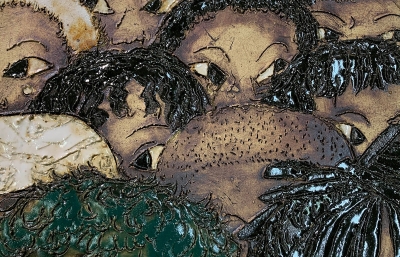Joshua Liner Gallery is excited to announce Ted Larsen's solo exhibition, Future Living In Yesterday's Tomorrow. The Santa Fe, New Mexico-based artist combines nontraditional materials with a post-minimalist aesthetic to create finely crafted geometric sculptures. Future Living In Yesterday's Tomorrow opens April 4, 2019, and will remain on view through May 4, 2019.
In his practice, Larsen exploits a post-minimalist aesthetic to explore the expressive quality of materials and the interdependency between the natural and industrial. Recalling minimalism's modular structures and serialized forms, Larsen's three-dimensional objects “aim to bring purist shapes and surfaces back down to earth,” by favoring the unpristine. To create his works, the artist overlays a patchwork of weathered steel, which was salvaged from automotive parts sourced from scrap yards, over wooden substructures. Typically not much wider than his shoulders, Larsen's humble constructions carry a strong visual impact even when exhibited on large walls.

Future Living In Yesterday's Tomorrow features a variety of geometric compositions. Some works are composed of square, rectangular, or trapezoidal structures, while others feature angular wedges or rounded forms. Rather than planning out his configurations ahead of time, Larsen follows a set of games to derive the arrangement for each work. Adhering to a predetermined set of rules for each strategy, “the work becomes almost self-producing.” As the artist explains, “I often work within a unit system in which I create geometric building blocks, and by ordering or placing them in different positions relative to one another, they create new patterns beyond the original units.”
Projecting out far enough to cast playful shadows beneath them, Larsen's three-dimensional objects inhabit the wall, while simultaneously behaving like paintings and sculptures. The artist states, “A sculpture holds the possibility of magic; things can appear or disappear depending on where you stand in relation to the work. Painting doesn't function like this; no matter where you stand, the piece will always look essentially the same. I love the absolute quality of painting and the endless possibilities of seeing sculpture poses. One of the many things my work addresses is where the painting ends and where sculpture begins."

